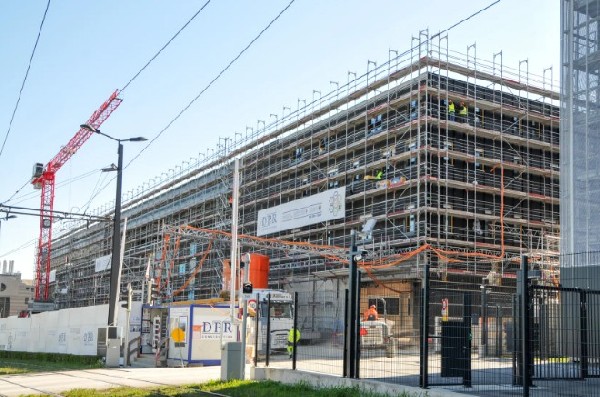
As a growing number of governments and organizations pledge to reduce carbon emissions, data center owners and operators are looking at ways they can operate sustainably. This is especially important as demand for data centers is increasing, given that companies are becoming more cloud-reliant. Consequently, many local governments try to regulate where data center construction can take place and how it impacts the local energy infrastructure. However, new methods of design and construction mean new opportunities.
In Glattbrugg, near Zurich, Switzerland, the residual heat from three data centers owned by Digital Realty, will be used for heating and hot water in the neighboring buildings of the community. So, while the operation of data centers inherently will consume a great deal of power, these buildings will actually result in a substantial saving of carbon emissions.
Demand for computing power and connectivity has only increased in the context of COVID-19, further accelerating the growth of the data center sector. DPR Construction is building the third data center of this campus for Digital Realty. The first two buildings are already in operation. DPR is leading the Design-Build and ground-up construction of the three-story data center facility on Digital Realty’s campus. Scope of the project includes sitework, shell and core, as well as 12MW fit-out. There will also be a sky bridge connecting to the ZUR2 building when completed. The facility will total 24MW of critical power when finished. The DPR scope of the project includes the shell and core of the building and a 12MW turnover in 2023. The new building was designed with a focus on energy-saving and modular architecture.
The data centers require less energy than decentralized solutions because in a data center a lot of power is pulled together in one point and servers work very efficiently together. Digital Realty is going a step further and teaming up with the Energy and Heat Supplier Cooperative Elektra Baselland and the local energy supplier to facilitate a network to heat the local area buildings with energy that is nearly CO2-emission free and sustainably cooled. This energy will be sourced from the operations of the three data centers and provide an extremely reliable and constant heat source.
The energy connection will consist of a central system that generates heat and cold, which will be supplied to customers via pipelines, which can then be used for heating or for preparing hot water. The use of data center residual heat leads to a maximum reduction in carbon dioxide emissions. Moreover, the energy network supplying the residual heat does not cause any noise nor odors, which would be a nuisance. It also guarantees a stable supply of energy generation. Given rising energy prices in Europe, it pencils out to be more cost effective over the longer term, as well.



 Join our thriving community of 70,000+ superintendents and trade professionals on LinkedIn!
Join our thriving community of 70,000+ superintendents and trade professionals on LinkedIn! Search our job board for your next opportunity, or post an opening within your company.
Search our job board for your next opportunity, or post an opening within your company. Subscribe to our monthly
Construction Superintendent eNewsletter and stay current.
Subscribe to our monthly
Construction Superintendent eNewsletter and stay current.